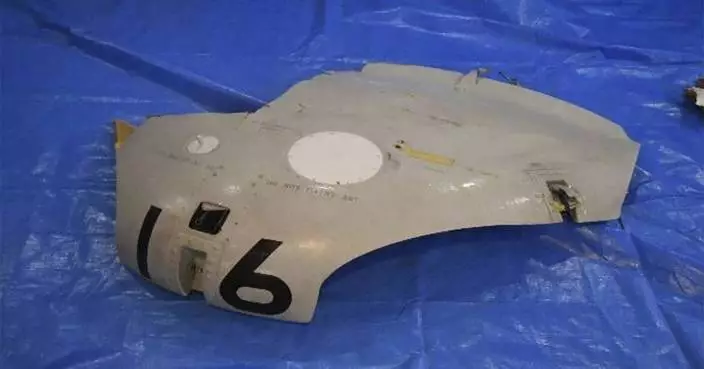Matthew Wade has been cut from Australia’s test squad for the scheduled tour to South Africa.
While the 33-year-old wicketkeeper-batsman didn’t make the 19-player list for South Africa, though, he was picked as vice-captain of an 18-player squad that is set to play New Zealand in a series of Twenty20 matches.
The tours are expected to be held concurrently in March, although there hasn’t been confirmation of the schedule for test series.

Australia's Matthew Wade walks from the field after he was dismissed without scoring during play on day four of the fourth cricket test between India and Australia at the Gabba, Brisbane, Australia, Monday, Jan. 18, 2021. (AP PhotoTertius Pickard)
South Australia wicketkeeper Alex Carey has been elevated to the test squad as backup gloveman for captain Tim Paine, and Queensland fast bowler Mark Steketee was also included.
Travis Head, who was dropped from the starting XI for the series-deciding test loss to India in Brisbane earlier this month, was preferred as a middle-order batsman to Wade.
Aaron Finch will lead the T20 squad for the five-game series in a squad that also includes emerging spinner Tanveer Sanga, the return of Jhye Richardson and the inclusion of short-form regulars Glenn Maxwell, Adam Zampa and Marcus Stoinis.

India's Cheteshwar Pujara, second left, is congratulated by Australia's Matthew Wade after defeating Australia by three wickets on the final day of the fourth cricket test at the Gabba, Brisbane, Australia, Tuesday, Jan. 19, 2021.India won the four test series 2-1. (AP PhotoTertius Pickard)
Cricket Australia staid in a statement Wednesday that the T20 squad will not change regardless of any changes to the test itinerary.
South Africa has just started a two-test series in Pakistan.
Australia squads:

Australia's Pat Cummins, right, is congratulated by teammate Matthew Wade after taking the wicket of India's Shardul Thakur during play on day three of the fourth cricket test between India and Australia at the Gabba, Brisbane, Australia, Sunday, Jan. 17, 2021. (AP PhotoTertius Pickard)
Tests: Tim Paine (captain), Pat Cummins (vice-captain), Sean Abbott, Alex Carey, Cameron Green, Marcus Harris, Josh Hazlewood, Travis Head, Moises Henriques, Marnus Labuschagne, Nathan Lyon, Michael Neser, James Pattinson, Will Pucovski, Steve Smith, Mitchell Starc, Mark Steketee, Mitchell Swepson, David Warner.
T20s: Aaron Finch (captain), Matthew Wade (vice-captain), Ashton Agar, Jason Behrendorff, Mitchell Marsh, Glenn Maxwell, Ben McDermott, Riley Meredith, Josh Philippe, Jhye Richardson, Kane Richardson, Daniel Sams, Tanveer Sangha, D’Arcy Short, Marcus Stoinis, Ashton Turner, Andrew Tye, Adam Zampa.
More AP sports: https://apnews.com/apf-sports and https://twitter.com/AP_Sports

Australia's Tim Paine carries a helmet during play on day two of the fourth cricket test between India and Australia at the Gabba, Brisbane, Australia, Saturday, Jan. 16, 2021. (AP PhotoTertius Pickard)
ORONO, Maine (AP) — The world’s largest 3D printer has created a house that can cut construction time and labor. An even larger printer unveiled on Tuesday may one day create entire neighborhoods.
The machine revealed Tuesday at the University of Maine is four times larger than the first one — commissioned less than five years ago — and capable of printing ever mightier objects. That includes scaling up its 3D-printed home technology using bio-based materials to eventually demonstrate how printed neighborhoods can offer an avenue to affordable housing to address homelessness in the region.
Thermoplastic polymers are extruded from a printer dubbed the “Factory of the Future 1.0." There could be even larger printers after the University of Maine breaks ground this summer on a new building, a spokesperson said.
The massive printer “opens up new research frontiers to integrate these collaborative robotics operations at a very large scale with new sensors, high-performance computing and artificial intelligence,” said Habib Dagher, director of UMaine’s Advanced Structures & Composite Center, where both of the printers are located.
Those attending the event included representatives from departments of defense, energy and housing, as well as other stakeholders who plan to utilize the new technologies made available by the printer. Heidi Shyu, under secretary of defense for research and engineering, said the printer "stands as a beacon of innovation."
The printer's frame fills up the large building in which it’s housed on the UMaine campus, and can print objects 96 feet long by 32 feet wide by 18 feet high (29 meters by 10 meters by 5.5 meters).
It has a voracious appetite, consuming as much as 500 pounds (227 kilograms) of material per hour.
The original printer, christened in 2019, was certified by Guinness World Records as the world’s largest polymer 3D printer, the university said. It was used to create a 600-square-foot, single-family home made of wood fiber and bio-resin materials that are recyclable. Dubbed “BioHome3D," it showed an ability to quickly produce homes. To meet the growing demand for housing, Maine alone will need another 80,000 homes over the next six years, according to MaineHousing.
Dagher said there's a shortage of both affordable housing and workers to build homes. The university wants to show how homes can be constructed nearly entirely by a printer with a lower carbon footprint. The buildings and construction sector accounts for roughly 37% of global greenhouse gas emissions, largely due to the production and use of materials such as cement, steel and aluminum that have a significant carbon footprint, according to the United Nations Environment Programme.
Such printed buildings can be recycled, which is unique compared to current construction. “You can basically deconstruct it, you can grind it up if you wish, the 3D printed parts, and reprint with them, do it again,” Dagher said before the event.
“It’s not about building a cheap house or a biohome,” he added, referring to the first 3D-printed house made entirely with bio-based materials. “We wanted to build a house that people would say, ‘Wow, I really want to live there.’”
Looking ahead, researchers plan to tinker with the material consumed by the machine, including more bio-based feedstocks from wood residuals that are abundant in Maine, the nation’s most heavily forested state.
But it can be used for a variety of other creations and already has been used for a range of things, from boats to defense department structures. In the past, the university showed off a 25-foot boat created by the first printer.
As for the original 3D printer, it isn't going away. The two printers can be used in concert to streamline manufacturing by working on the same project — or even part if necessary — and there will be even more of them working together in the future, officials said.
McDermott reported from Providence, Rhode Island.

Habib Dasher, director of UMaine's Advanced Structures & Composite Center, speaks at the unveiling of the world's largest 3D printer, Tuesday, April 23, 2024, at the University of Maine, in Orono, Maine. (AP Photo/Robert F. Bukaty)
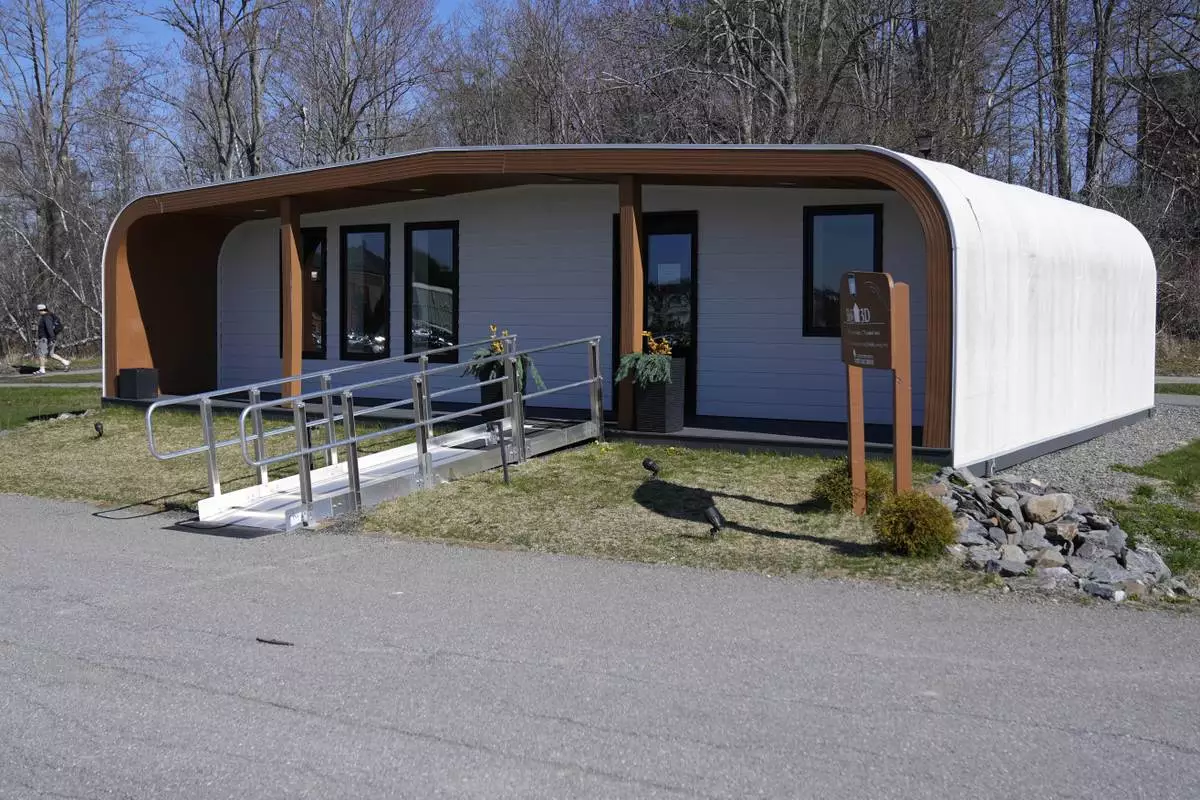
The BioHome3D is seen Tuesday, April 23, 2024, at the University of Maine, in Orono, Maine. The 600-square-foot single-family home was made by UMaine's original 3D printer in 2019. (AP Photo/Robert F. Bukaty)
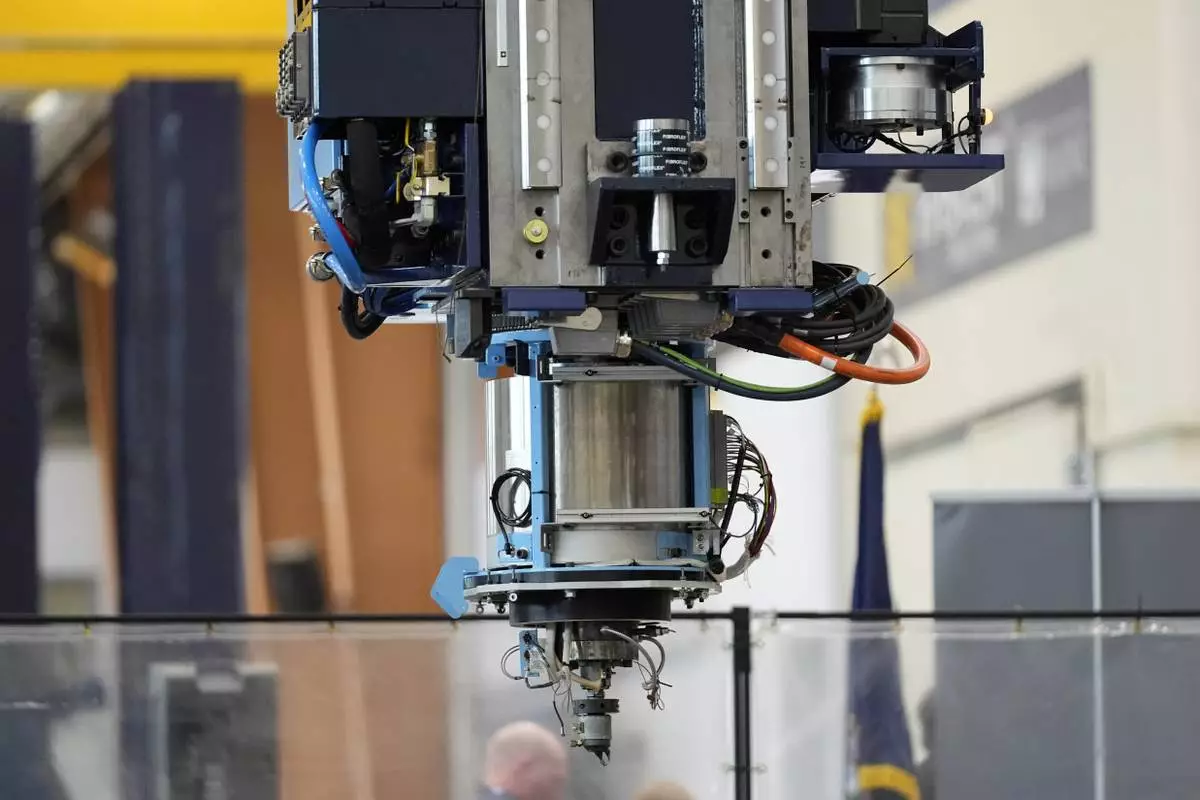
The world's largest 3D printer is seen Tuesday, April 23, 2024, at the University of Maine, in Orono, Maine. (AP Photo/Robert F. Bukaty)
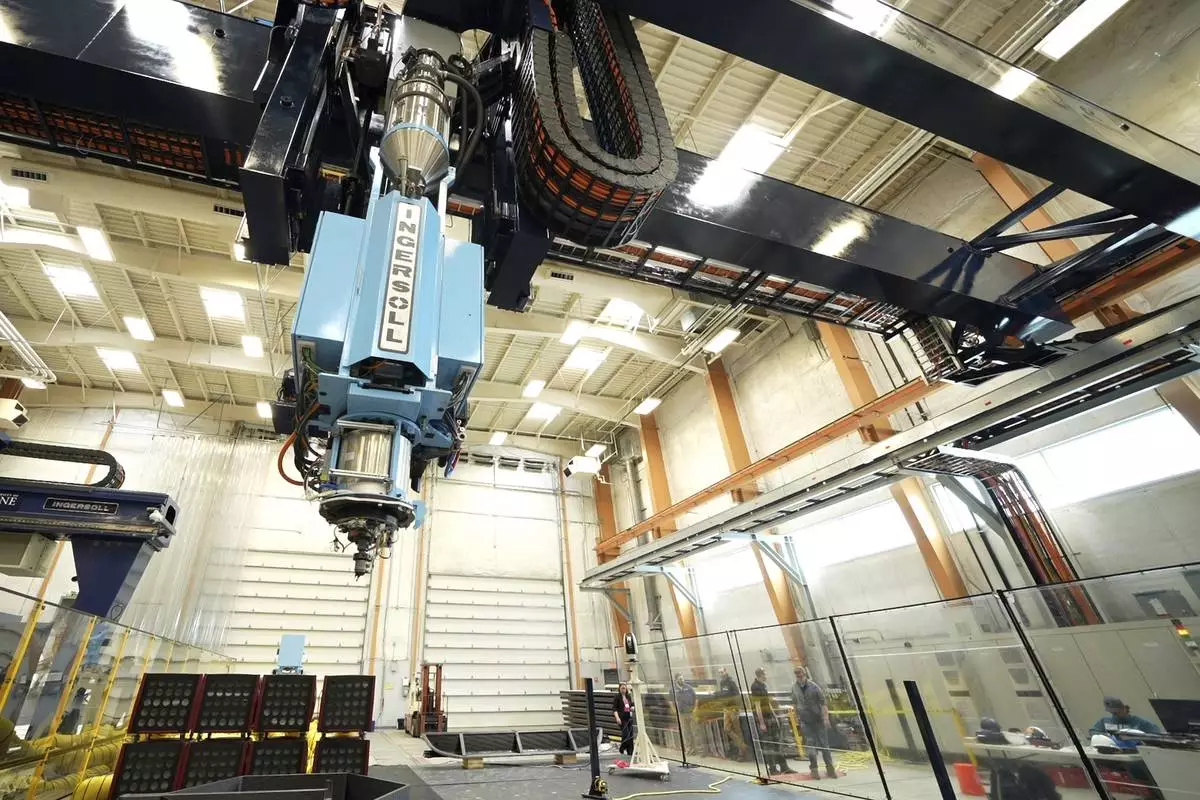
The world's largest 3D printer is seen Tuesday, April 23, 2024, at the University of Maine, in Orono, Maine. (AP Photo/Robert F. Bukaty)
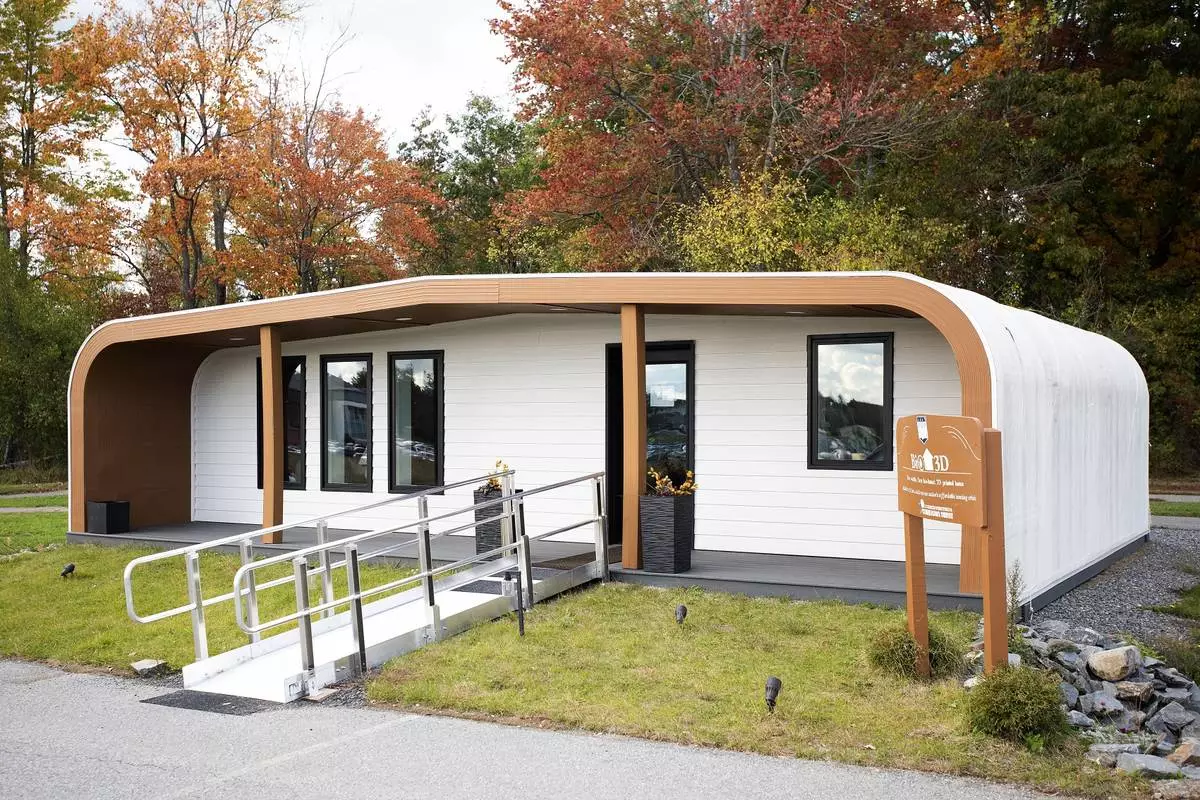
The University of Maine's first 3D printed home sits on Oct. 12, 2023, in Orono, Maine. The printer that created the house can cut construction time and labor. An even larger printer unveiled on Tuesday, April 23, 2024, may one day create entire neighborhoods. (AP Photo/Kevin Bennett)

A cross section of an exterior wall of a house is being printed on a 3D printer at the University of Maine's Advanced Structures & Composite Center on Oct. 12, 2023, in Orono, Maine. An even larger printer unveiled on Tuesday, April 23, 2024, may one day create entire neighborhoods. (AP Photo/Kevin Bennett)
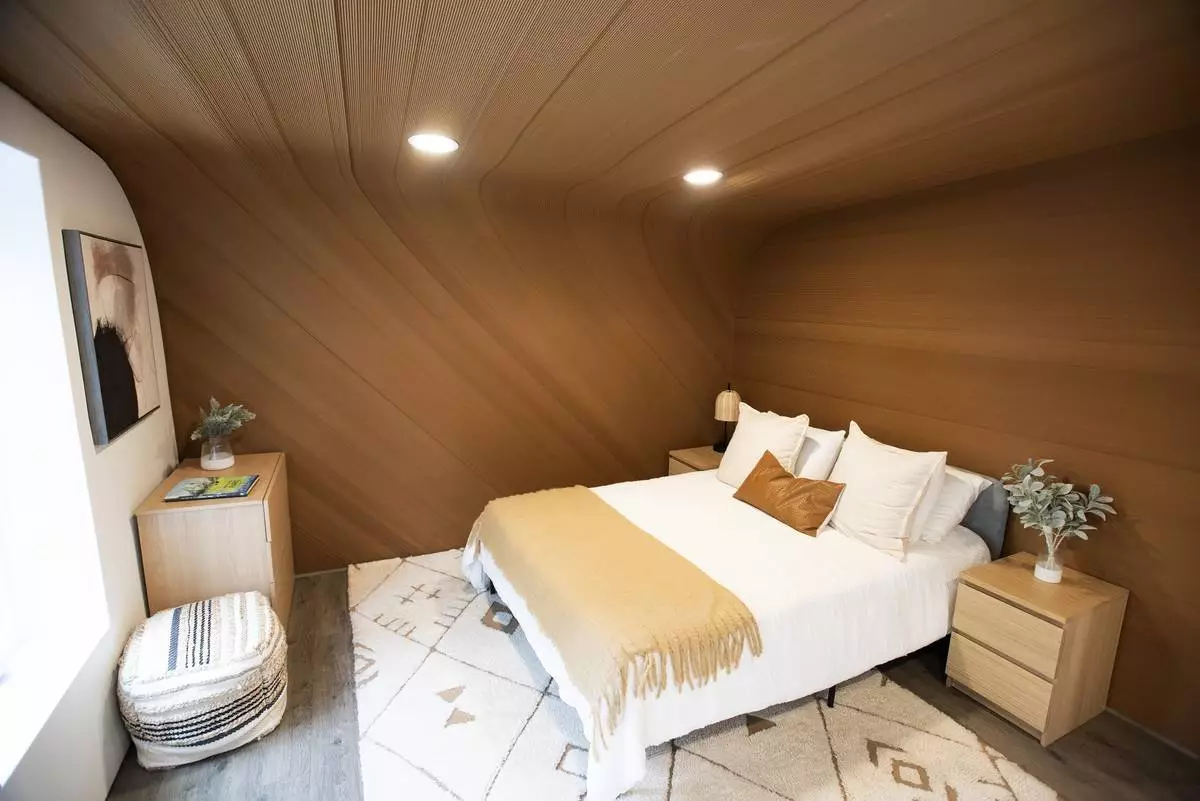
A bed sits inside the University of Maine's first 3D printed home on Oct. 12, 2023, in Orono, Maine. The printer that created the house can cut construction time and labor. An even larger printer unveiled on Tuesday, April 23, 2024, may one day create entire neighborhoods. (AP Photo/Kevin Bennett)
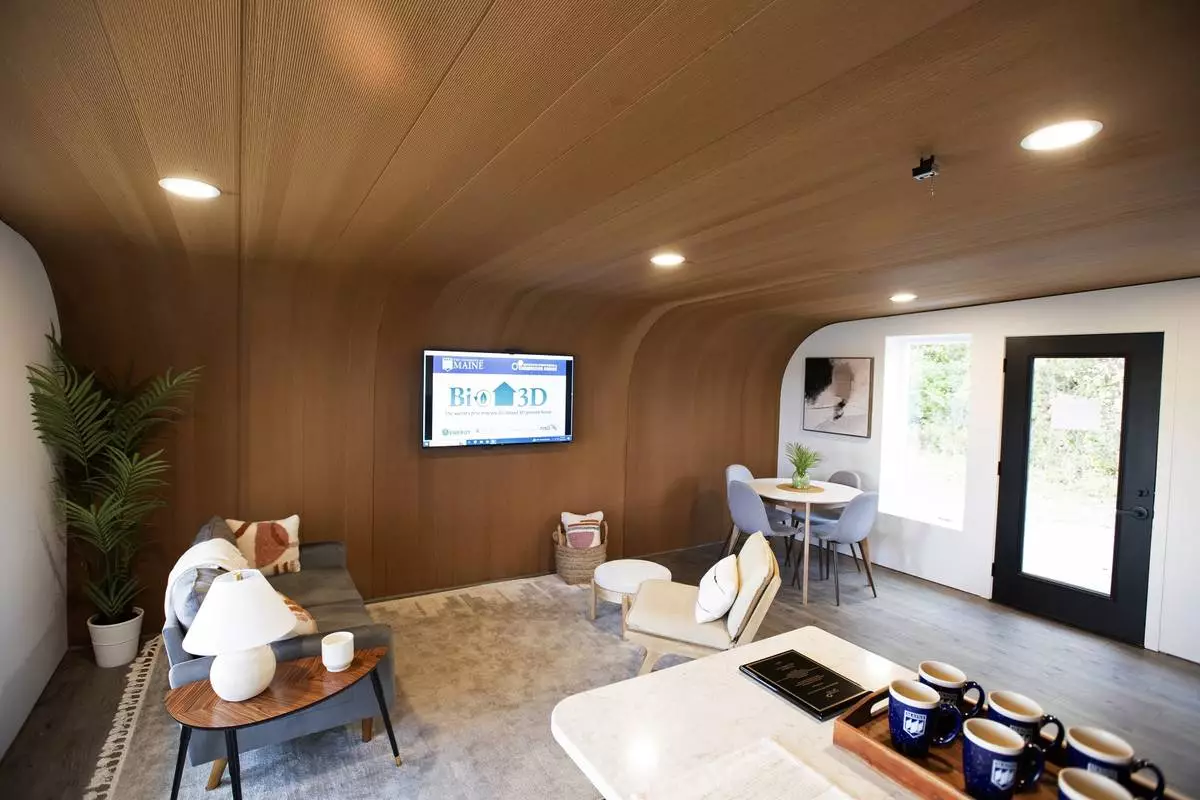
The inside of the University of Maine's first 3D printed home is visible on Oct. 12, 2023, in Orono, Maine. The printer that created the house can cut construction time and labor. An even larger printer unveiled on Tuesday, April 23, 2024, may one day create entire neighborhoods. (AP Photo/Kevin Bennett)





















